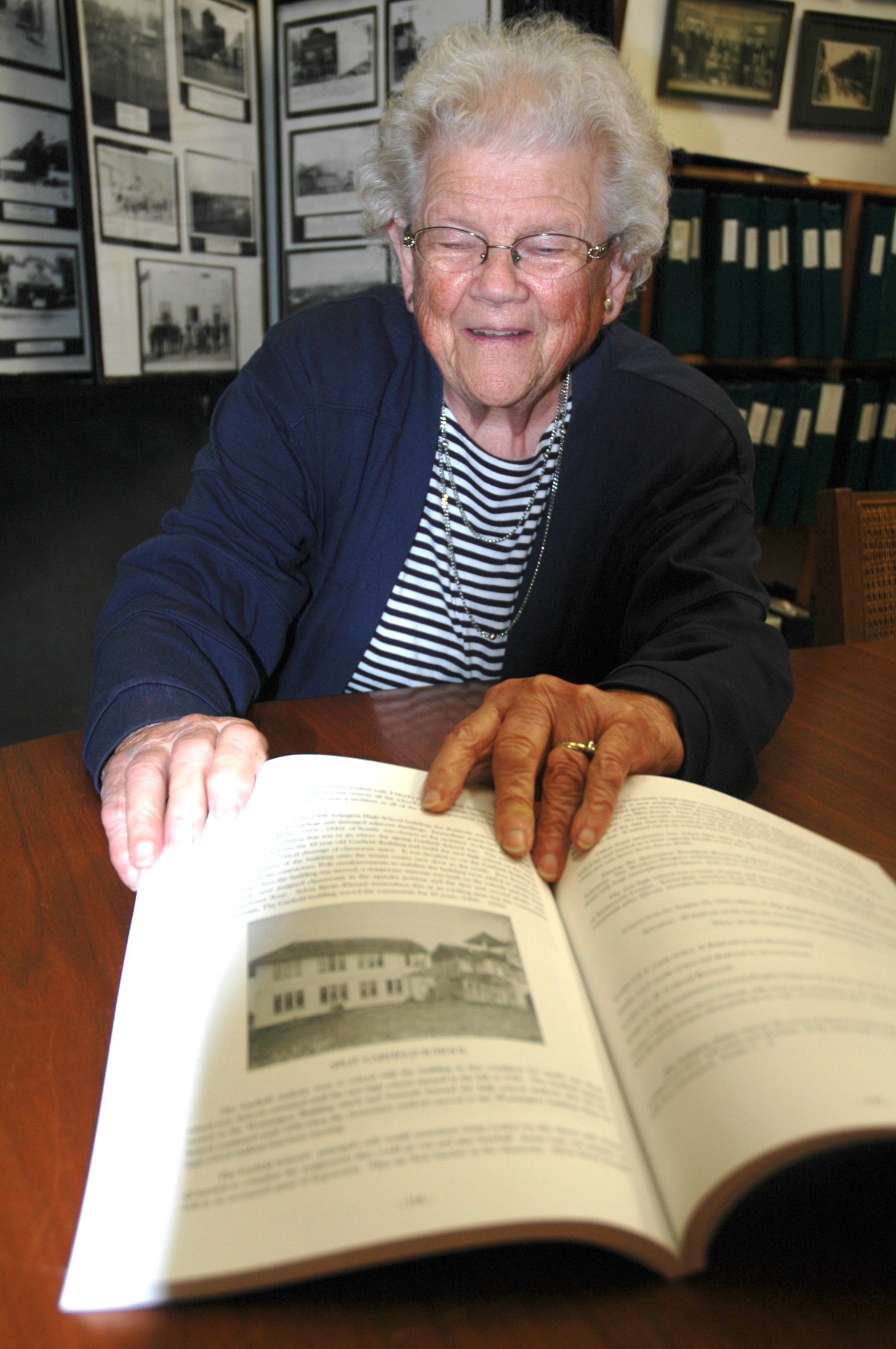ARLINGTON — It took Shirley Prouty from 2003 to March of this year to produce the first volume of “100 years of Arlington WA,” her planned series of books chronicling the history of the town.
Her second book won’t take nearly as long. She expects the second volume to be out before Christmas.
Community interest in the books is high enough that the first volume sold out , and enough additional contributions were made that Prouty produced a second printing.
Rather than offering a strictly chronological, year-by-year historical account, Prouty has made the sheer breadth of information more manageable by devoting each volume to a specific subject.
The first volume covers the early immigrants who settled in the Stillaguamish Valley, starting in the mid-1800s, and explains how those pioneers fed themselves and fostered a sense of community in what was still a relative wilderness.
“The Arlington Times was invaluable in those days, simply by printing announcements of when the churches would meet,” Prouty said. “They couldn’t always do it on Sundays, because travel was much more challenging than it is now. Pastors would often have to walk the trails just to meet with all their parishioners.”
With the second printing, Prouty was able to include details on how the Ciceros, who started their farm in 1889, cared for area orphans, eventually adopting one as their own.
Prouty also noted how essential doctors’ house calls were to keeping accurate records since it was their job to record home births. In those days, the vast majority of births were at home.
Dr. Martin Adams alone recorded close to 1,600 home births, and in one instance, a woman with no birth certificate had to rely on her school records for documentation, because Adams had forgotten to enter her name into the records at Olympia.
The second volume will focus on how trains changed the frontier. Prouty pointed out that the Civil War forced railroads to standardize, so that Union forces could transport arms to their troops.
“What people don’t realize is that trains needed a source of water every thirty miles, or else they would literally run out of steam,” Prouty said, as she reviewed old photographs of coal and water towers at train stops in Arlington, Darrington and Bryant. “The railroads owned their own coal mines, so they could control the fuel supply for their engines.”
One of the early mayors of Arlington, H.W. Sessions, even registered a “cable accentuated haulage” mechanism for the trains, with the Canadian patent office in 1923.
“He was an engineer, like my husband and both of our sons, and he wanted a better way to control the weight on those train cars,” Prouty said.
When a railroad terminal was established in Tacoma, Prouty explained that the question remained of who would take responsibility for the 40 miles of track in between Arlington and Tacoma.
“There’s a whole world of politics surrounding those trains,” Prouty said.
Prouty was able to produce the first volume working through the Stillaguamish Valley Pioneer Association to secure a grant from the county. The Pioneer Museum itself has provided a treasure trove of documentation, including old issues of newspapers.
“I’ve learned a lot about copyright issues,” said Prouty, who is now well-versed in exceptions based on educational use and the age of the documents in question. “I’ve gotten lots of photos from families, and even from the Daily Herald.”
To get a copy of the book contact the Pioneer Association at 360-435-7289 or stillypioneers@frontier.com.







